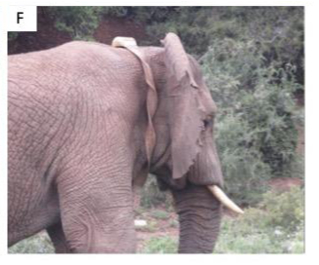Twisting collars on male elephants in shrub terrain: animal welfare considerations for researchers, managers and manufacturers
DOI:
https://doi.org/10.69649/pachyderm.v64i.534Abstract
For the purposes of testing the impacts of habitat expansion on elephant movement, six XL LoRa elephant radio collars were fixed on three adult male elephants and three adult female elephants prior to a fence being removed at Kariega Game Reserve, South Africa. While none of the collars on female elephants twisted, within five months, all the male elephant collars had twisted, with some triple and double twisting. Behavioural monitoring revealed indications of irritation that resulted in the removal and/or replacement of all twisted collars. It was discovered that two of the male elephants had developed wounds underneath their twisted collars, therefore, only one elephant was re-collared, with a collar that was modified to minimize further risk of twisting, however it twisted again. To investigate this rare incidence of elevated collar twisting, our study assessed the following: elephant behaviour to guide decision-making around interventions and well-being; when, where and how these incidents occurred to investigate the mechanism of twisting and the likelihood of human error; collar design and refurbishment to develop recommendations to minimize the likelihood of twisting; and data obtained from organizations using elephant collars for comparison. From this, it was theorized that browsing behaviour in bulls in dense vegetation, and inadequate collar design were the likely causes in twisting occurrence. We urge organizations using LoRa elephant collars to emphasize post-application monitoring, and exercise caution, when attaching on bulls in dense vegetation. We encourage collar manufacturers to thoroughly investigate twisting incidents and adjust collar structures accordingly, and inform clients about the possibility of twisting. By addressing these issues, we can better ensure the well-being of elephants, research success, and improved device safety and efficacy.

Downloads
Published
How to Cite
Issue
Section
License
Copyright (c) 2023 Brooke Friswold, Brett Mitchell, George Gale, Antoinette Van de Water

This work is licensed under a Creative Commons Attribution-NonCommercial 4.0 International License.



